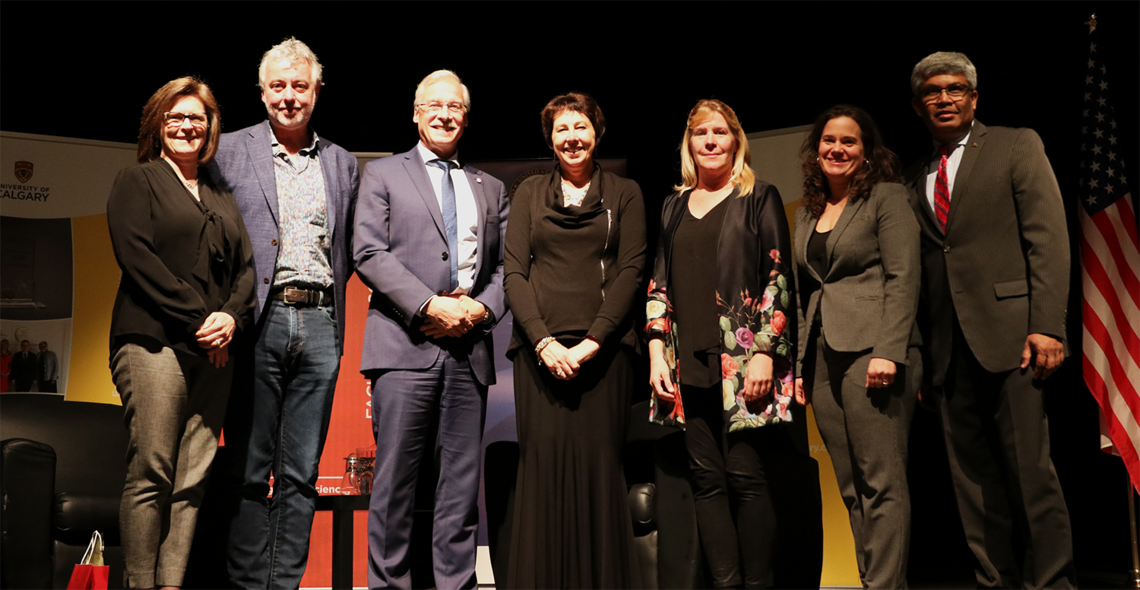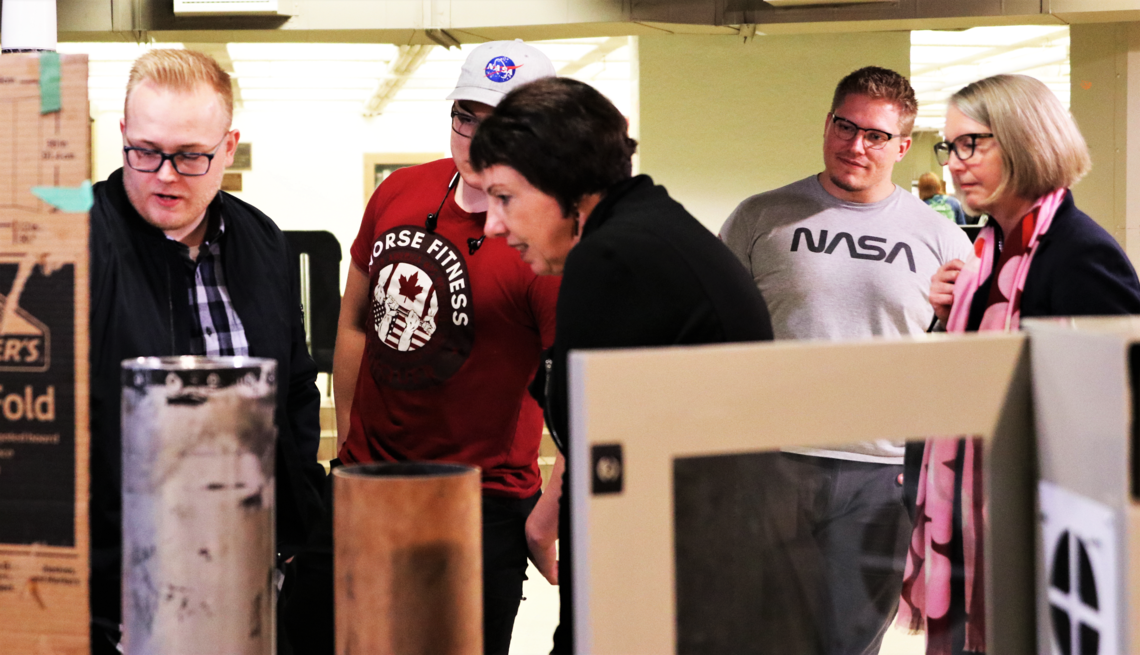Oct. 22, 2019
USA Day: Sunny with a chance of space weather

Since early days, we humans have endeavoured to learn more about the world around us and build civilization. Yet only recently has technological advancement allowed us to explore space and start addressing fundamental questions about our place in the universe.
Calgarians had the opportunity to hear about the victories and challenges of space exploration directly from Dr. Nicola Fox, NASA’s director of the Heliophysics Division, as part of the first USA Day organized by University of Calgary International, the Faculty of Science and the U.S. Consulate General in Calgary.
Fox shared her research on the sun and its effects on Earth and the solar system, outlining the very recent history of space research, NASA’s involvement as well as UCalgary’s contributions to NASA’s space missions.

The first USA Day focused on U.S. – Canada space collaborations.
University of Calgary International
- Above, from left: Lesley Rigg, Eric Donovan, Andre Buret, Nicola Fox, Susan Skone, U.S. Consul General Lucia Piazza, and Janaka Ruwanpura.
“The sheer growth of technology in the last 60 years introduced miniaturization, light-weighting and an awful lot of technology that has enabled us to build and send a spacecraft to explore the mysterious atmosphere of the sun, the corona,” says Fox, who led this ambitious NASA project.
“It is critical to understand the processes happening in the corona, why temperature increases and solar wind accelerates as we move away from the sun. This will help us efficiently monitor and anticipate future solar events that can affect life on Earth.”
“With 20-plus space missions since the '70s and over 100 scholars involved in New Earth Space Technologies research, University of Calgary is a world leader in space research.” says Dr. Andre Buret, interim vice-president (research). “We operate one of the world’s most extensive ground-based systems of auroral cameras to understand and predict space weather,” a critical capability since there are no cameras in space to fulfil this task.
“Since the United States of America is a long-standing partner and a country of emphasis for us, and this year marks the 50-year anniversary of NASA’s historic moon landing, it made perfect sense to focus on the U.S. – Canadian space collaboration for our first USA Day,” says Dr. Janaka Ruwanpura, vice-provost (international).
The numerous students attending the event were eager to talk to Fox at the end and find out about space career opportunities in Canada and the U.S.

NASA’s Nicola Fox shared her research on the sun and its effects on Earth.
The numerous students attending the event were eager to talk to Fox at the end and find out about space career opportunities in Canada and the U.S.
For the many of you sharing the same passion, check out these useful resources below. This is the beginning of a new era in space exploration and your time to become a space explorer.
- About space careers and UCalgary’s cutting-edge space research
- CSA’s 10 tips on how to pursue a career in the space sector
- NASA internship opportunities
UCalgary – a leader in space research
With 20-plus space missions since the '70s, high-profile global projects with NASA and the Canadian Space Agency and home to more leaders in space science, geomatics, communications and satellite systems than any other university in Canada, University of Calgary is a world leader in the development and application of earth-space technologies.
Whether forecasting space weather and geomagnetic storms to protect navigation and communication satellites through the SMILE project, or investigating the formation of our solar system through the OSIRIS-Rex Asteroid Sample Return Mission, our 100-plus researchers drive the technological revolution in the sky that enables us to sense and monitor our natural environment and built world like never before.
Learn more: explore.ucalgary.ca/themes/our-place-universe

A rocket, an auroral camera and a planetarium were some of the items on display during the event.
University of Calgary Intgernational

